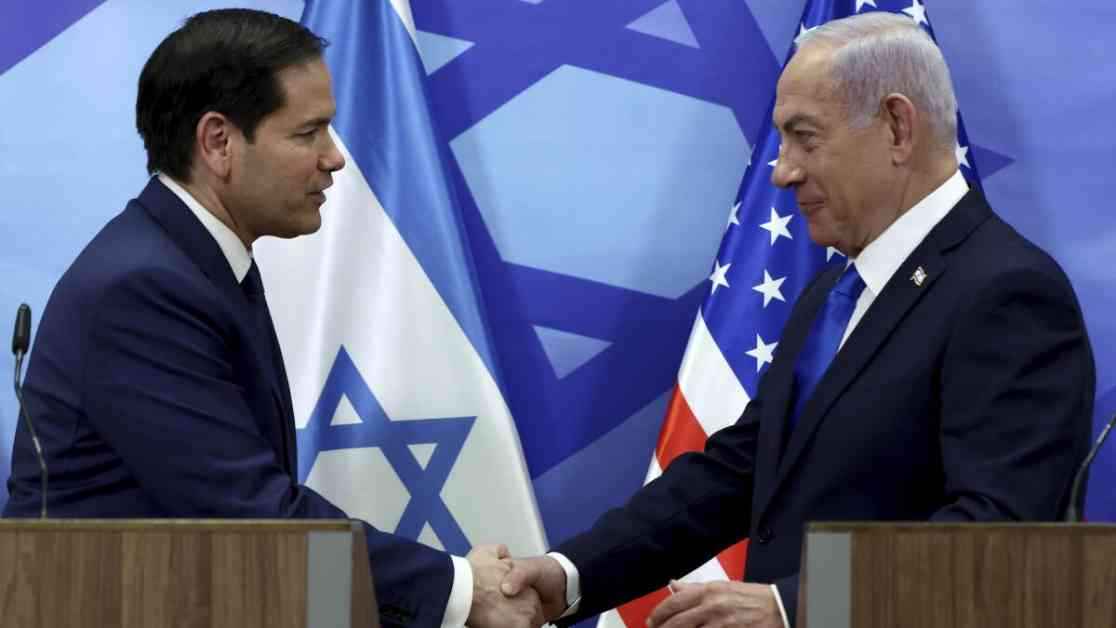Marco Rubio, the United States’ new Secretary of State, finds himself in a challenging position as he navigates the conflicting policy objectives set forth by President Trump in the Middle East. Trump’s vision of transforming the war-torn Gaza Strip into a “Riviera of the Middle East” is at odds with the goal of regional peace, particularly in relation to Israel and Saudi Arabia. Rubio embarked on his inaugural Mideast tour by meeting with Israeli Prime Minister Benjamin Netanyahu in Jerusalem to discuss Trump’s ambitious Gaza initiative.
Challenges and Contradictions in the Middle East
Both Rubio and Netanyahu expressed support for Trump’s bold vision for Gaza during their meeting, despite skepticism from human rights groups and others regarding its practicality and ethical implications. However, Rubio’s upcoming visits to the United Arab Emirates and Saudi Arabia highlight the differing perspectives on resolving the conflict in Gaza. Saudi Crown Prince Mohammed bin Salman, previously open to normalization with Israel, now faces increased pressure due to shifting U.S. priorities and the diminishing prospects of an independent Palestinian state.
Complexities of Regional Diplomacy
The divergent approaches of Israel, the United States, and Arab nations underscore the complexities of brokering a comprehensive peace agreement in the region. While Trump envisions a grand regional accord that includes normalized relations between Israel and Saudi Arabia, opposition from Arab states, including Saudi Arabia, emphasizes the necessity of a Palestinian state. Jordan’s King Abdullah II has also expressed concerns about accommodating Palestinian refugees in his country, complicating the path to peace outlined by Trump’s administration.
Rubio’s role in publicly endorsing Trump’s Gaza plan while mitigating potential complications in regional diplomacy highlights the delicate balance required in navigating the political landscape of the Middle East. As Trump challenges Arab states to propose alternative solutions for postwar Gaza, Rubio must maintain a united front in support of the administration’s initiatives while addressing the concerns and priorities of key stakeholders in the region.
As Rubio and Netanyahu underscore the importance of countering Iran’s influence in the Middle East, their discussions pivot towards strategic cooperation and military deterrence against Iranian aggression. While Israel has achieved significant victories against Iranian proxies in the region, the ongoing challenges posed by Hamas in Gaza and the unresolved issue of Israeli hostages underscore the complex dynamics at play in the region.
In conclusion, Rubio’s Mideast trip serves as a litmus test for Trump’s ambitious vision for the region and the delicate balance required to navigate conflicting policy objectives in the Middle East. The evolving landscape of regional diplomacy and the strategic imperatives of key stakeholders underscore the complexities of achieving lasting peace and stability in the Middle East. As Rubio continues his diplomatic engagements in the region, the path to a comprehensive peace agreement remains fraught with challenges and uncertainties.


